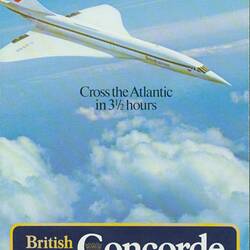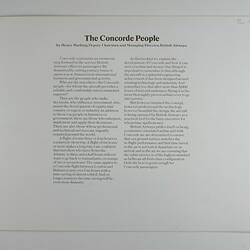The development of a supersonic passenger aircraft was spurred by technological breakthroughs in the 1950s. Jet powered airliners such as the de Havilland Comet and Boeing 707 provided faster, smoother travel at higher altitude. Having lost their initial advantage to America due to early airframe fatigue problems with the Comet I, British aircraft companies and the government were keen to take the next great technological leap towards an airliner that could fly faster than the speed of sound (about 761 mph at sea level). A Supersonic Transport Aircraft Committee met for the first time in London in October 1956 to examine the problem. Research soon established that a delta wing shape with a slim fuselage was the most practical design. A French team from Sud-Aviation in Toulouse (later Aerospatiale) was working on the same idea with input from the Dassault firm which had designed the delta wing Mirage III supersonic jet fighter. A joint British/French project was agreed by the respective governments and an agreement was signed in November 1962. One prototype and one 'pre-production' aircraft were to be built in each country. The name Concorde was agreed but there was initial dispute as to whether it should be spelt with an 'e'. British production was the responsibility of the British Aircraft Corporation (BAC) formed after a merger of several established firms. By January 1966 eleven airlines had expressed interest in ordering about 50 aircraft. These were: Air France (8), Air India (2), American Airlines (6), BOAC (8), Continental Airlines (3), Japan Air Lines (3), Middle East Airlines (2), Pan American (6), Qantas (4), Sabena (2) and TWA (6). The first flight of the prototype took place on 2 March 1969 at Toulouse with the British Concorde following soon after on 9 April 1969. Power was provided by four Bristol Siddeley/SNECMA Olympus turbojet engines with afterburner to provide additional thrust. A unique engine intake was designed to slow down air coming into the engines to allow continuous supersonic flight. Following a series of trial flights and tests using static airframes the Concorde was approved for production in 1970. Final testing and development delayed approval for passenger flights until 1975.
By this time there had been 5,500 hours of flight testing. Top speed was now Mach 2.2. Initial prospects for export sales were good with 16 airlines now holding options on ordering the Concorde. Eventually almost all these airlines withdrew their interest due to rising production costs and the early 1970s oil crisis which pushed up the operating cost sharpely. In the US, Boeing also abandoned its plans to build a supersonic transport aircraft (SST). Eventually just 20 Concorde aircraft were built, six of which were flown only on development trials and the type served only with British Airways and Air France after all other airlines cancelled their options. Further problems were associated with controversy regarding the environmental impact of the Concorde due to concerns about the 'sonic boom' as it broke the sound barrier, airport noise impact and pollution of the upper atmosphere. Flight bans delayed regular trans-Atlantic services to the USA until 1977. The first supersonic trans-Atlantic flight to Washington took place in May 1976.
In Australia, environmental concerns about a proposed Concorde service resulted in a 'Draft Environmental Impact Statement on Concorde Operations in Australia' being prepared in December 1975 by the British government which addressed environmental issues relating to Concorde operations from Melbourne. Concorde passenger flights to Singapore from the UK were flown between 1977 and 1980 but no regular passenger flights were ever operated from Australia despite British Airways plans announced for a regular service from Melbourne to the UK via Bahrain and Singapore in February 1977. The need to stop for fuel at these places reduced the advantage gained by extra speed.
On 12 August 1975 Concorde G-BOAC flew from Melbourne to Singapore in about 4 and a half hours as part of the BAC Endurance Flying Program. High fare costs and the fact that transition to supersonic flight could only occur over water, led to the Concorde being used exclusively on the trans-Atlantic London/Paris to New York route. A fire and fatal crash of an Air France Concorde after take-off from Paris in July 2000 led to all Concorde aircraft being grounded by August 2000. Kevlar armour was fitted to the wing fuel tanks to prevent a repeat of the burst tyre debris strike which had been blamed for causing the accident. Although flights were resumed by Air France and British Airways it was clear that both organisations had lost their commitment to the high cost, low volume Concorde in a world of tighter airline profit margins especially following the 11 September 2001 terrorist attacks. Larger capacity, subsonic aircraft such as the Airbus A380 and more fuel efficient designs such as the Boeing 787 Dreamliner were seen as the way of the future and Concorde operations ceased in October 2003. Surviving aircraft were given to museums in Britain, France and the USA. Concorde G-BOAC, which flew from Melbourne is currently displayed at Manchester Airport in the UK.
More Information
-
Keywords
-
Localities
-
Authors
-
Article types




